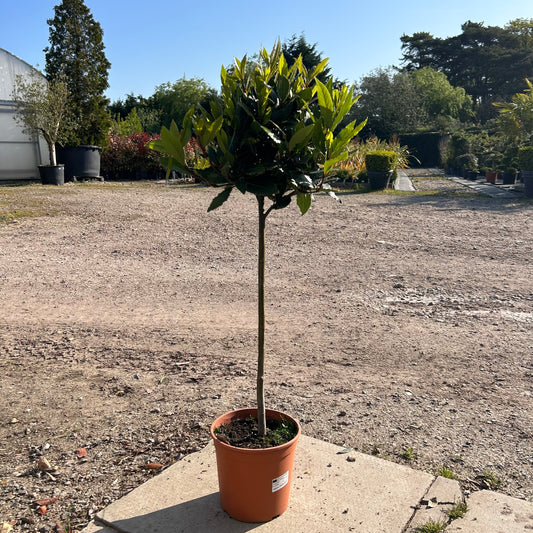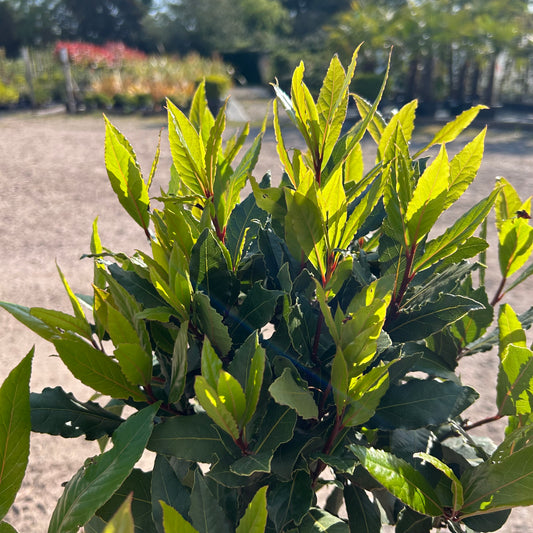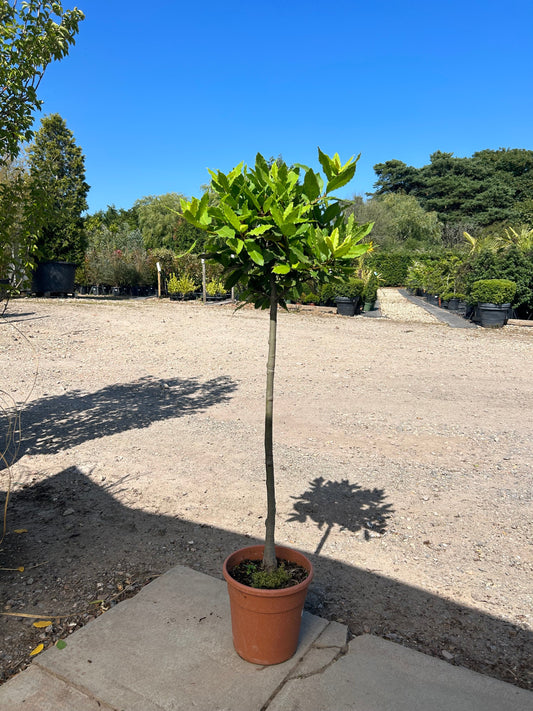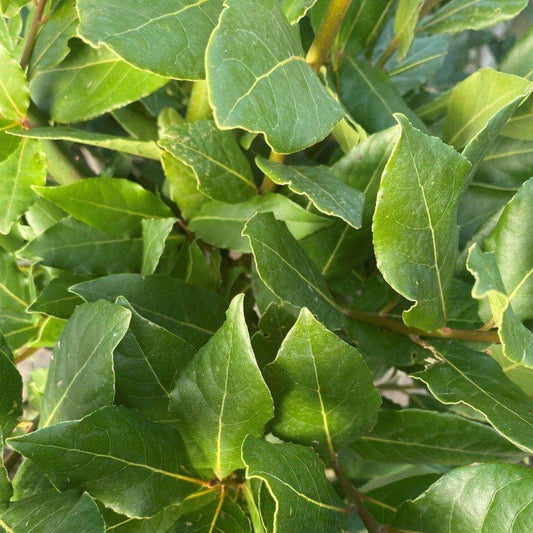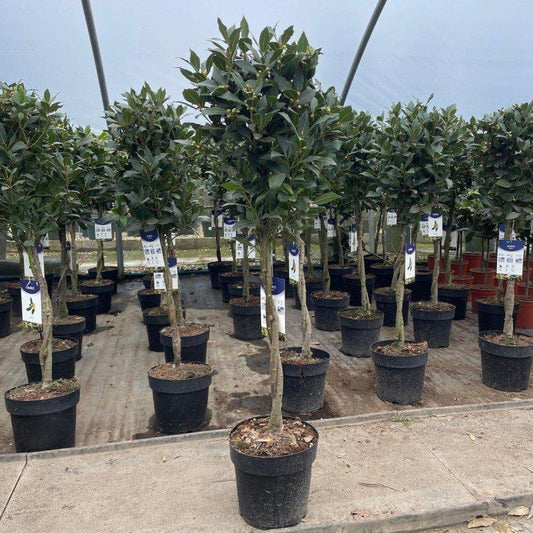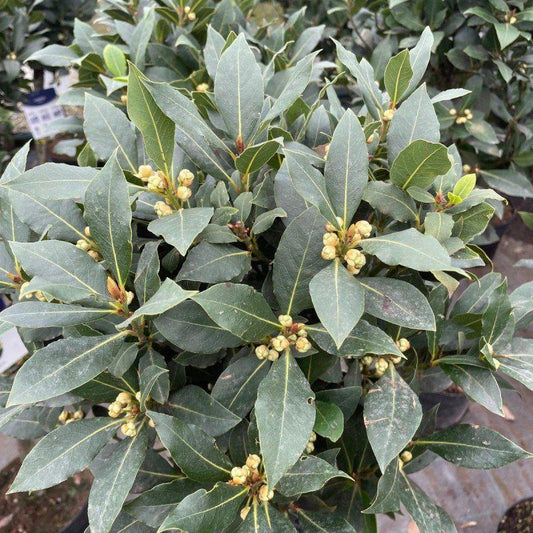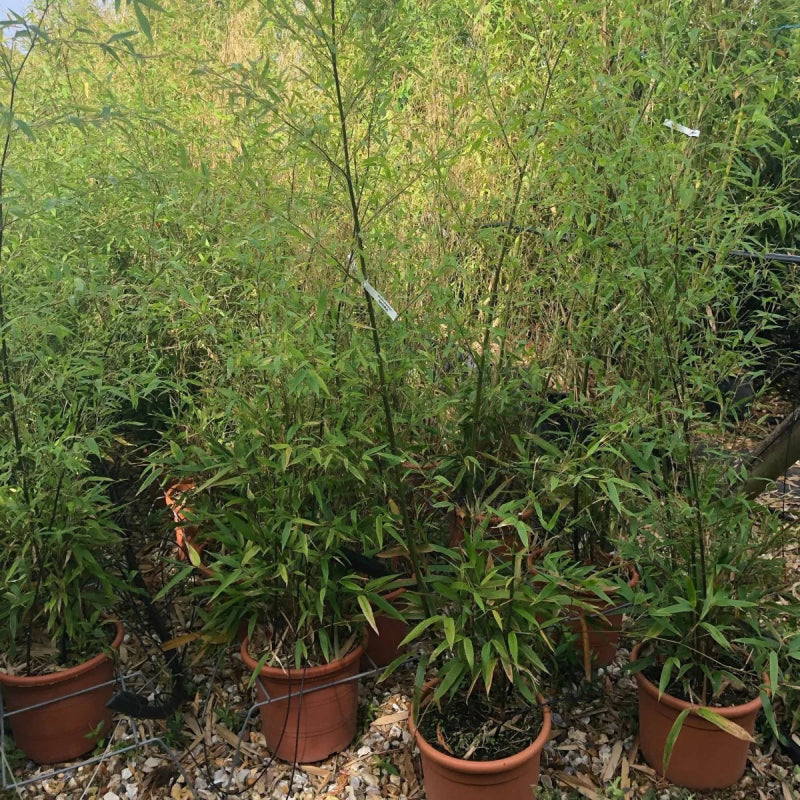Inside this Article:
- Introduction to Phyllostachys Nigra Bamboo
- Ideal Growing Conditions in the UK
- Planting and Early Care
- Maintenance and Pruning
- Controlling Spread
- Dealing with Pests and Diseases
- FAQs About Phyllostachys Nigra Bamboo Care
- Q: What makes Phyllostachys Nigra unique?
- Q: How much sunlight does Phyllostachys Nigra need?
- Q: How often should Phyllostachys Nigra be watered in the UK?
- Q: Can Phyllostachys Nigra withstand cold UK winters?
- Q: How can I control the spread of Phyllostachys Nigra?
- Q: Are there any common diseases or pests that affect Phyllostachys Nigra in the UK?
Introduction to Phyllostachys Nigra Bamboo
Phyllostachys Nigra, commonly known as Black Bamboo, is an ornamental bamboo species favored in UK gardens for its distinctive dark-colored canes and lush foliage. This guide provides practical advice for cultivating and maintaining Phyllostachys Nigra in the UK environment. Known for its unique black stems that develop with age, Phyllostachys Nigra offers a striking contrast in gardens and landscapes.
Ideal Growing Conditions in the UK
In the UK, Phyllostachys Nigra flourishes best in a location that receives full to partial sunlight. This bamboo prefers fertile, well-drained soil, though it is adaptable to various soil types. Regular watering is essential, especially during the drier summer months in the UK.
Planting and Early Care
When planting Phyllostachys Nigra, spacing and containment are important. Given its spreading habit, it’s advisable to use root barriers or plant in large containers. Planting in the spring allows the bamboo to establish itself throughout the growing season. Ensure adequate watering after planting and maintain soil moisture consistently.
See More information from Our Japanese Garden Escape below
Maintenance and Pruning
Regular maintenance of Phyllostachys Nigra includes watering during dry periods, fertilizing in the growing season, and pruning to control height and spread. In the UK, where garden space can be limited, managing its growth is essential. Pruning can also help in maintaining the plant's aesthetic appeal.
Controlling Spread
Phyllostachys Nigra can spread aggressively if not managed properly. In the UK, where gardens are often smaller, controlling its growth is crucial. Use root barriers or plant in containers to limit its spread. Regular monitoring and removal of unwanted shoots are recommended.

Dealing with Pests and Diseases
Phyllostachys Nigra is relatively hardy in the UK, but it's important to be vigilant for signs of pests or diseases. Common issues include root rot in overly wet conditions and leaf scorch during hot, dry summers. Prompt treatment of any problems helps keep the bamboo healthy.
FAQs About Phyllostachys Nigra Bamboo Care
Q: What makes Phyllostachys Nigra unique?
A: Its distinctive black canes, which develop as the plant matures, make it a unique and attractive choice for gardens.
Q: How much sunlight does Phyllostachys Nigra need?
A: It prefers full to partial sunlight. In the UK, a spot with good exposure to sunlight is ideal.
Q: How often should Phyllostachys Nigra be watered in the UK?
A: Water regularly, especially during dry spells. The soil should be moist but not waterlogged.
Q: Can Phyllostachys Nigra withstand cold UK winters?
A: Yes, it is quite hardy but may need some protection during extreme cold.
Q: How can I control the spread of Phyllostachys Nigra?
A: Use root barriers or grow in containers. Regular pruning of shoots and roots is also effective.
Q: Are there any common diseases or pests that affect Phyllostachys Nigra in the UK?
A: It's generally resistant to pests and diseases, though it can suffer from root rot in wet conditions and leaf scorch in prolonged dry periods.
Introduction to Phyllostachys Nigra Bamboo
Phyllostachys Nigra, commonly known as Black Bamboo, is an ornamental bamboo species favored in UK gardens for its distinctive dark-colored canes and lush foliage. This guide provides practical advice for cultivating and maintaining Phyllostachys Nigra in the UK environment. Known for its unique black stems that develop with age, Phyllostachys Nigra offers a striking contrast in gardens and landscapes.
Ideal Growing Conditions in the UK
In the UK, Phyllostachys Nigra flourishes best in a location that receives full to partial sunlight. This bamboo prefers fertile, well-drained soil, though it is adaptable to various soil types. Regular watering is essential, especially during the drier summer months in the UK.
Planting and Early Care
When planting Phyllostachys Nigra, spacing and containment are important. Given its spreading habit, it’s advisable to use root barriers or plant in large containers. Planting in the spring allows the bamboo to establish itself throughout the growing season. Ensure adequate watering after planting and maintain soil moisture consistently.
See More information from Our Japanese Garden Escape below
Maintenance and Pruning
Regular maintenance of Phyllostachys Nigra includes watering during dry periods, fertilizing in the growing season, and pruning to control height and spread. In the UK, where garden space can be limited, managing its growth is essential. Pruning can also help in maintaining the plant's aesthetic appeal.
Controlling Spread
Phyllostachys Nigra can spread aggressively if not managed properly. In the UK, where gardens are often smaller, controlling its growth is crucial. Use root barriers or plant in containers to limit its spread. Regular monitoring and removal of unwanted shoots are recommended.

Dealing with Pests and Diseases
Phyllostachys Nigra is relatively hardy in the UK, but it's important to be vigilant for signs of pests or diseases. Common issues include root rot in overly wet conditions and leaf scorch during hot, dry summers. Prompt treatment of any problems helps keep the bamboo healthy.
FAQs About Phyllostachys Nigra Bamboo Care
Q: What makes Phyllostachys Nigra unique?
A: Its distinctive black canes, which develop as the plant matures, make it a unique and attractive choice for gardens.
Q: How much sunlight does Phyllostachys Nigra need?
A: It prefers full to partial sunlight. In the UK, a spot with good exposure to sunlight is ideal.
Q: How often should Phyllostachys Nigra be watered in the UK?
A: Water regularly, especially during dry spells. The soil should be moist but not waterlogged.
Q: Can Phyllostachys Nigra withstand cold UK winters?
A: Yes, it is quite hardy but may need some protection during extreme cold.
Q: How can I control the spread of Phyllostachys Nigra?
A: Use root barriers or grow in containers. Regular pruning of shoots and roots is also effective.
Q: Are there any common diseases or pests that affect Phyllostachys Nigra in the UK?
A: It's generally resistant to pests and diseases, though it can suffer from root rot in wet conditions and leaf scorch in prolonged dry periods.


